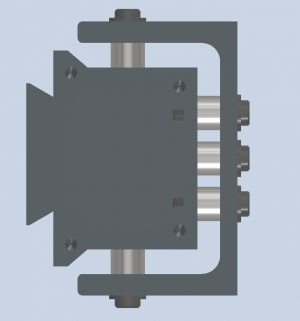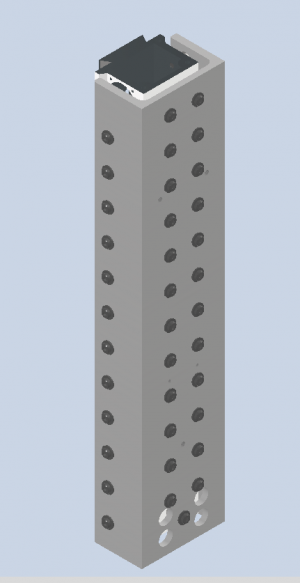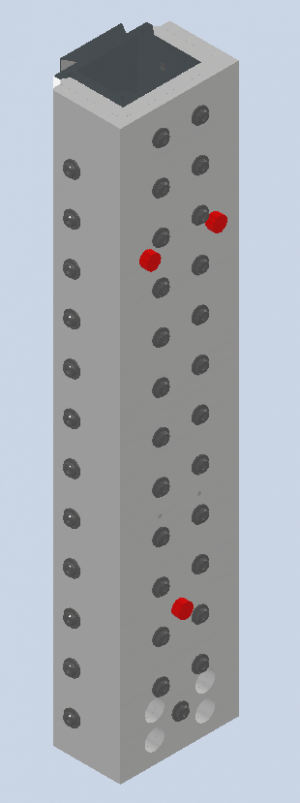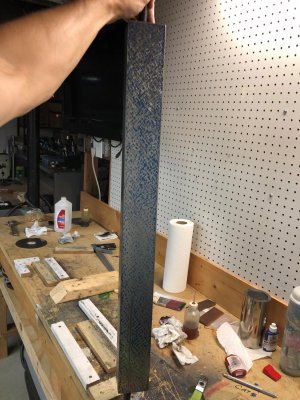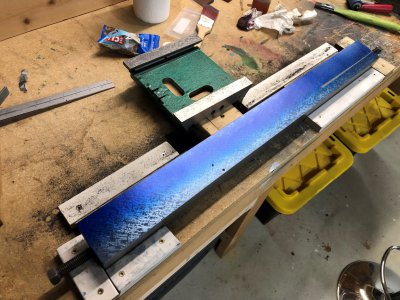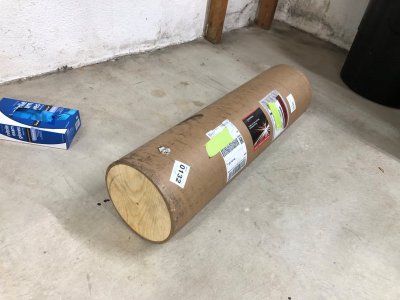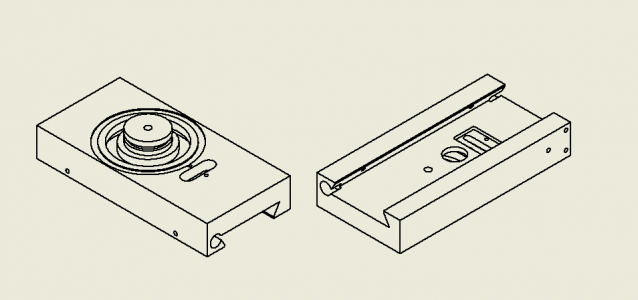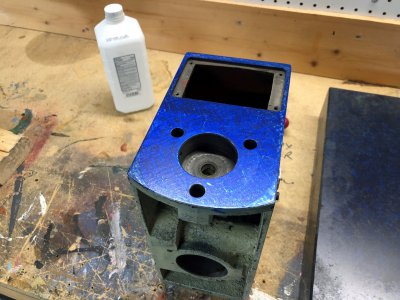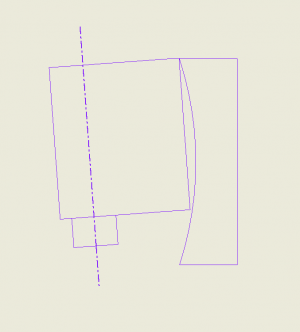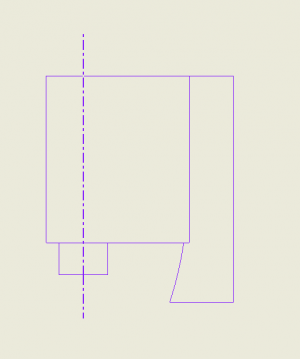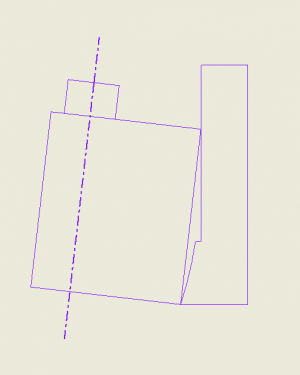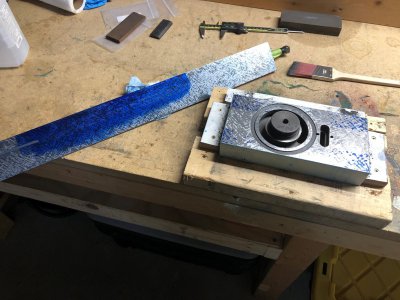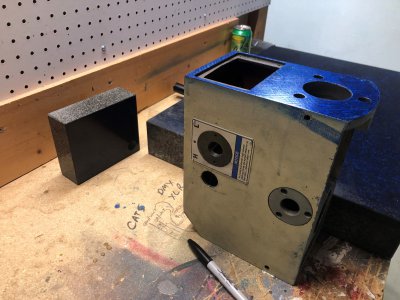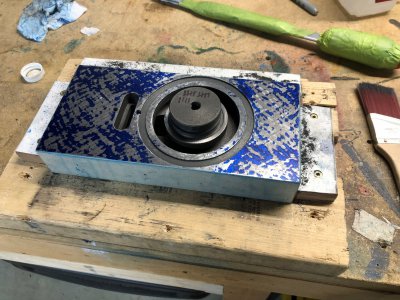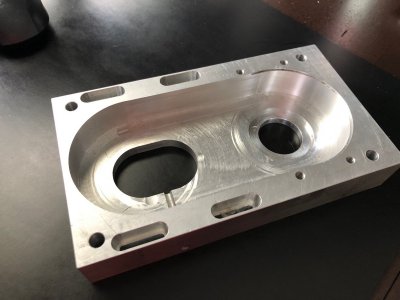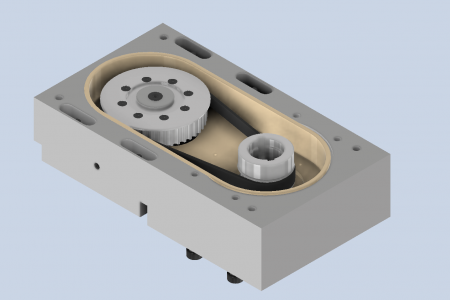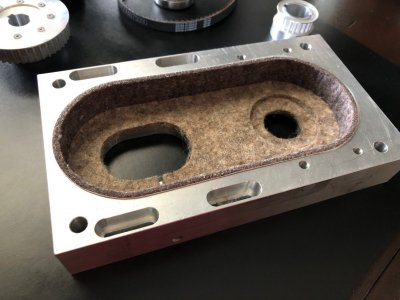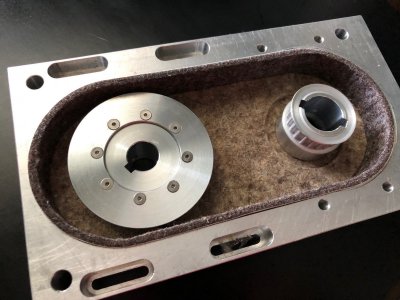- Joined
- Mar 26, 2018
- Messages
- 2,724
Did some quick calcs on the belleville disc spring stack. I should be able to increase the stack height from 0.99" to 1.88" with a new drawbar and no other changes made.
My current arrangement is a 7x2 stack of McMaster Carr 9712K437 that looks like this ))(())(())(()). In this configuration we have the following:
In theory, simply increasing the number of power drawbar cylinders from 3 to 4 would give a 450 lbf tension increase since I could make the drawbar tighter and still reliably release the tool.
Fortunately, all the other options I considered also use the same belleville disc spring so I have options. Unfortunately, McMaster Carr doesn't seem to have another part number that is incrementally better than this one. It is an unusual combination of small diameter, high spring rate, and long travel.
My next concept is to keep the double stack arrangement, but increase the number of stacks to increase travel. With the new drawbar I could fit a 13x2 stack that looks like ))(())(())(())(())(())(())(()). In this configuration we have the following:
Finally I can rearrange the stack into a 9x3 configuration looking like this )))((()))((()))((()))((())). This slightly increases travel over my current setup, but greatly increases the working loads.
I can take some measurements of the existing drawbar setup when I reassemble the spindle and that will provide me the info I need to make some theoretical predictions about what stack configuration is better. The good news is that both new stack configurations would use the same drawbar and spindle top hat geometry, so I could easily reconfigure them and test both.
Between the increased stack height and the extra stage on the air cylinder, I'd expect roughly double the drawbar tension that I get today.
I could also just increase the stack height and skip the extra cylinder stage, but what is the fun in that?
My current arrangement is a 7x2 stack of McMaster Carr 9712K437 that looks like this ))(())(())(()). In this configuration we have the following:
- Working Load: 1800 lbs
- Flat Load: 2544 lbs
- Deflection at working load: 0.133"
- Deflection at flat load: 0.168"
In theory, simply increasing the number of power drawbar cylinders from 3 to 4 would give a 450 lbf tension increase since I could make the drawbar tighter and still reliably release the tool.
Fortunately, all the other options I considered also use the same belleville disc spring so I have options. Unfortunately, McMaster Carr doesn't seem to have another part number that is incrementally better than this one. It is an unusual combination of small diameter, high spring rate, and long travel.
My next concept is to keep the double stack arrangement, but increase the number of stacks to increase travel. With the new drawbar I could fit a 13x2 stack that looks like ))(())(())(())(())(())(())(()). In this configuration we have the following:
- Working Load: 1800 lbs
- Flat Load: 2544 lbs
- Deflection at working load: 0.247"
- Deflection at flat load: 0..312"
Finally I can rearrange the stack into a 9x3 configuration looking like this )))((()))((()))((()))((())). This slightly increases travel over my current setup, but greatly increases the working loads.
- Working Load: 2400 lbs
- Flat Load: 3816 lbs
- Deflection at working load: 0.171"
- Deflection at flat load: 0.216"
- Deflection at 90 psi, 4 stack cylinder: 0.152"
I can take some measurements of the existing drawbar setup when I reassemble the spindle and that will provide me the info I need to make some theoretical predictions about what stack configuration is better. The good news is that both new stack configurations would use the same drawbar and spindle top hat geometry, so I could easily reconfigure them and test both.
Between the increased stack height and the extra stage on the air cylinder, I'd expect roughly double the drawbar tension that I get today.
I could also just increase the stack height and skip the extra cylinder stage, but what is the fun in that?


